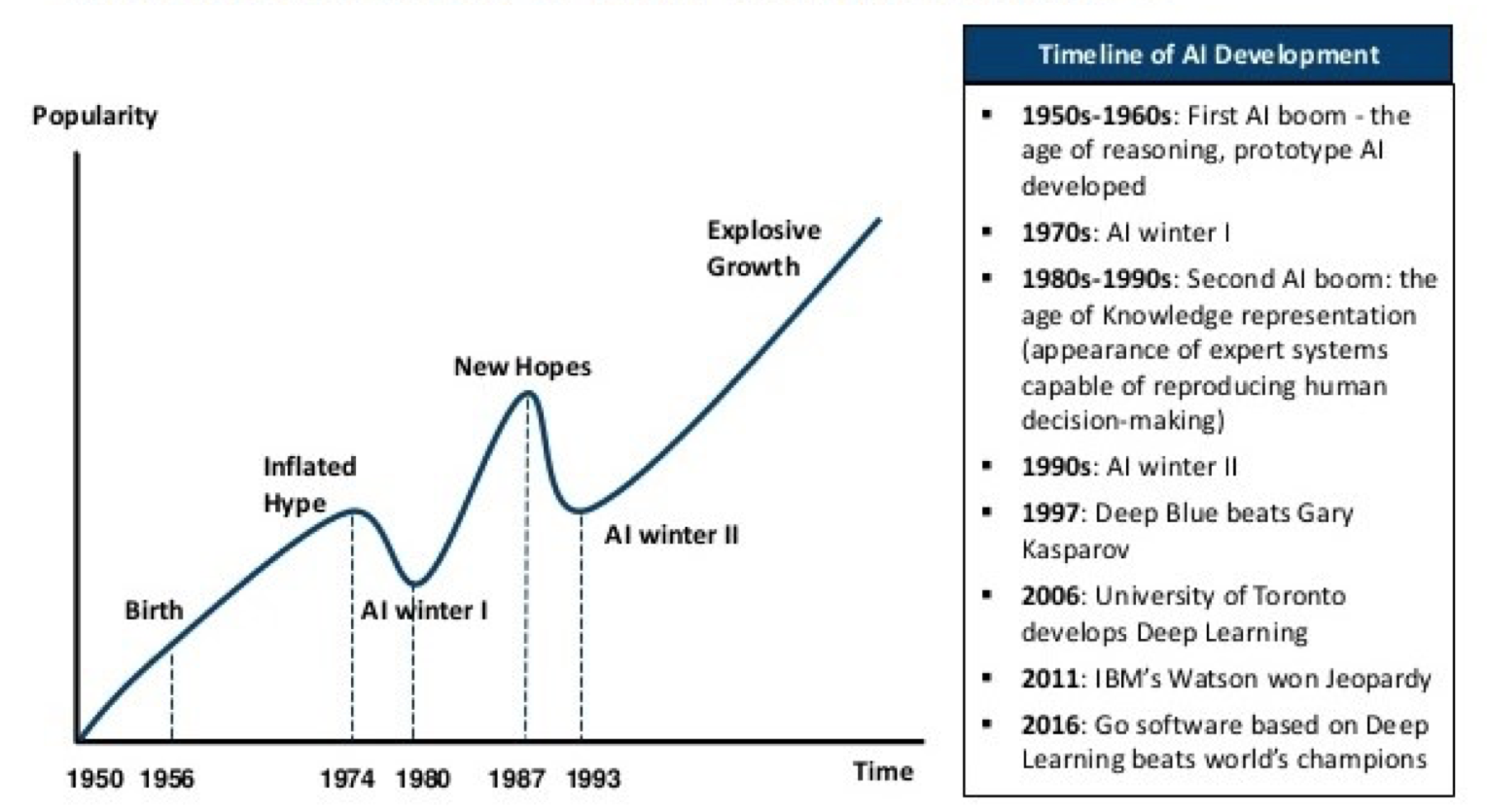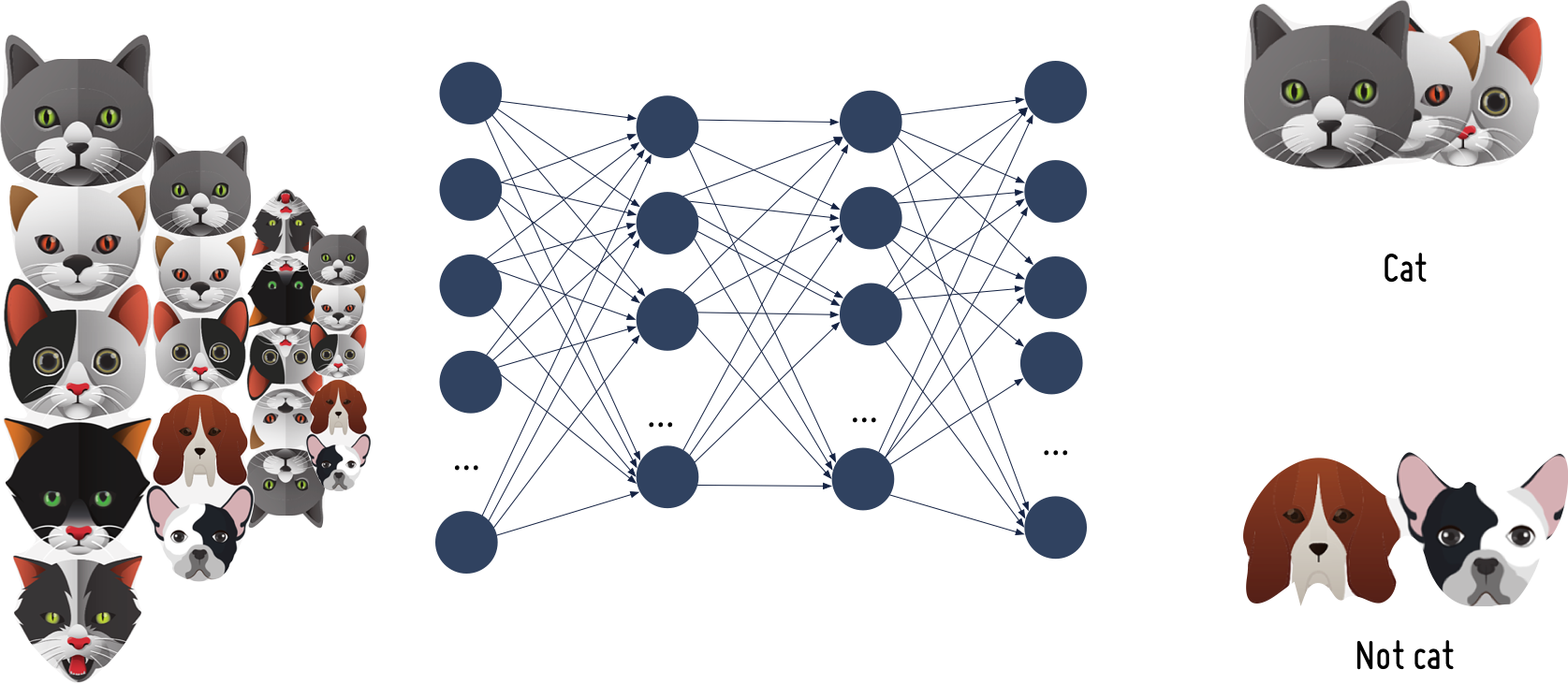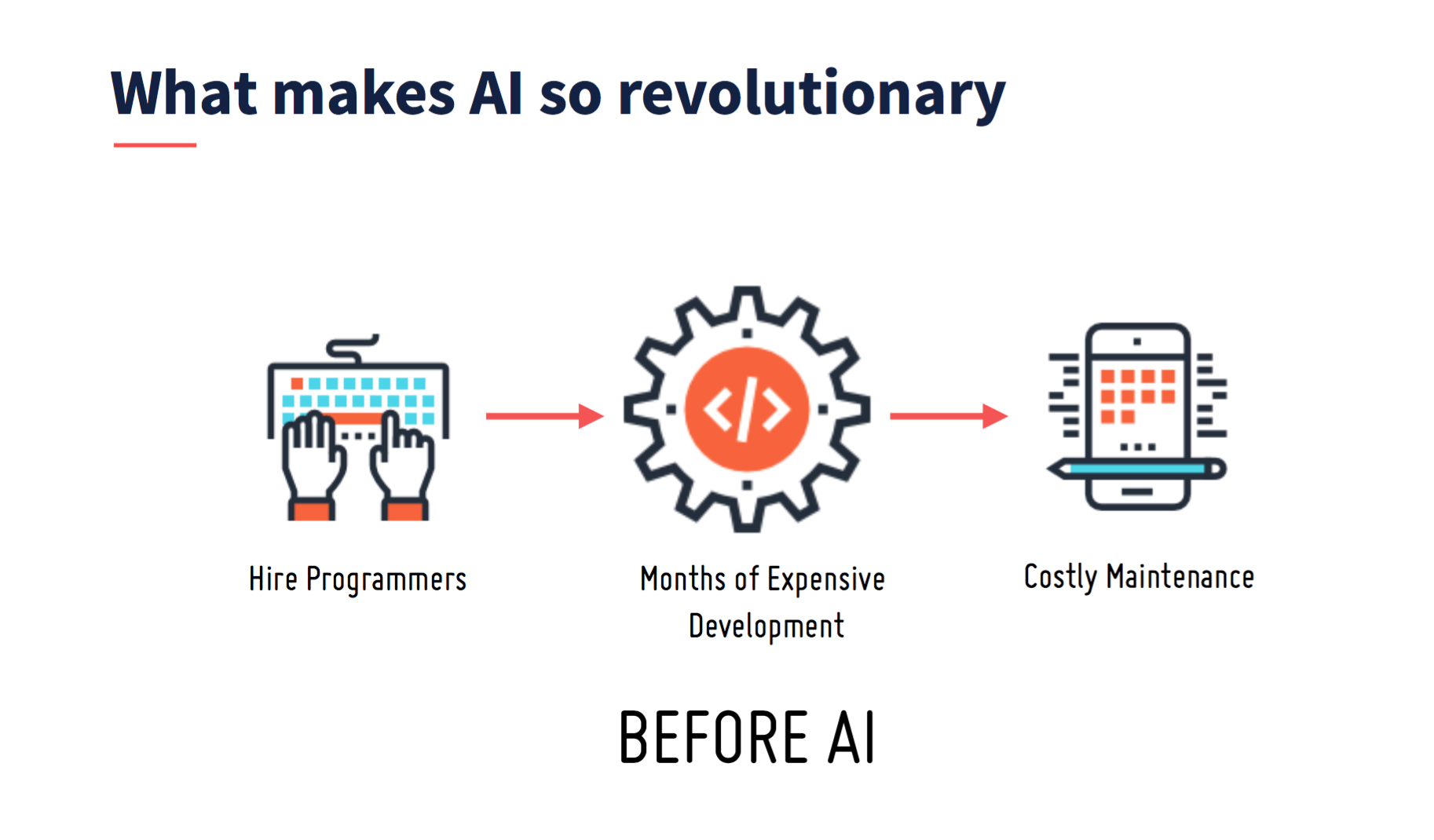Maybe you have heard about AI. Maybe you have heard vague claims that “AI is the future,” and menacing words about how if you don’t implement it into your business, well, look out. But maybe you’re scratching your head, wondering, “What even is this thing that everybody seems to be talking about so much?”
“Any sufficiently advanced technology is indistinguishable from magic.” Arthur C. Clark
Maybe you are familiar with Siri, or Alexa. Maybe you have chucked to yourself about how Netflix has curated a super-specific category on "Period Dramas with a Strong Female Lead" for you, based on your viewing history.

Simply put, AI is a new type of software that can simulate human intelligence. Using computing power and sophisticated software techniques, the computer learns how to perform certain tasks.
As the power of the computer increases, AI can perform more tasks that, previously, would have required human intelligence to accomplish, such as voice recognition and image recognition. It has already started to morph into something magical and scary at the same time.
AI Difficult Gestation: A Brief History of Automation
AI actually took very long time to develop to its full potential as we see today. As a matter of fact, it went through several difficult times. At various points, many people, including AI experts, simply gave up and declared that AI simply is not possible.
The first artificial neural network was invented in 1958 by psychologist Frank Rosenblatt. It was called Perceptron, and it was intended to model how the human brain handled and understand truth and logic. It contained a network of many small pieces of hardware that acted like neuronal synapses. Each learning task was then split and divided among these small computers.
Later on, in early 1980, John McCarthy started to add software support for this perceptron-like computer by inventing a symbolic language called LISP. Unlike today's computer programming, instead of using boolean logic, LISP worked at the symbol level. It was a new concept to capture knowledge instead of just data. This was the first system that was later used as a foundation to build the artificial neural networks that we know today.

While LISP energized the AI hopes of researchers, it took another two decades of difficult research to get the first neural network even feasible to handle today task. Not until Geoffrey Hinton - together with Yoshua Bengio and Yann LeCun were able to put together a working system called Deep Learning. These three researchers are referred to by some as the "Godfathers of AI" and "Godfathers of Deep Learning."
You might remember some of the most publicized moments in the timeline of AI. For example, in 1997 Deep Blue beat Gary Kasparov, or in 20111 IBM’s Watson won Jeopardy. Overall, the history of AI, which began in the mid-1950's, has been characterized by some moments of hope, inflated hype, and has progressed in fits and starts. But now, it is really here. Right now, AI is experiencing explosive growth that will not slow down.
AI is not one single technology. It is a momentum resulting from the advancement of computer power, cheap storage, and fast fiber based computer networking. Together, those elements have pushed this field of study to a meteoric rise.
How Does AI Work?
AI is all about two things: prediction and categorization. AI can use data to determine whether something is a good purchase or not.
Dependent on data. AI is completely dependent on the data it has to process. The more data you put in, the better it gets.

A crucial thing to understand about AI is that it programs itself. Rather than hiring a programmer to write code, AI codes itself.
AI is all about categorization. Is something a "good buy" or not? Is a customer a "good customer" or a "bad customer"? There is a great Silicon Valley TV episode, "hot dog / not hot dog."
You might have heard the terms "machine learning" and "deep learning." These are just different approaches to AI or schools of AI. For context, AI applications you might have heard about that are being developed by the big tech companies, such as speech recognition, image recognition, and reading / generating natural written language, are deep learning applications.
We are at the very early stages of AI now, but as the use of AI technology advances and increases, it will continue to create huge changes not only in the business environment but in everyday life as well.
Before and After Self-Learning AI
Before AI
Before AI, we were still using intelligence that was artificial. Chances are, if you're reading this post, you have used software in your life and in your career. Before AI, we used software to make intelligence—in other words, software used data to make decisions. Before AI, a company has to hire a bunch of programmers who write digital instructions (which we call "code"). Intelligence is done through this set of instructions. And every single time there is a new update to the logic, guess what you have to do? You have to make sure the coders come in and update the instruction.

After AI
Let's now compare this thing with AI. The output is the same. You use data to make decisions. However, instead of spoon-feeding the instructions, all you have to do is give the machine an example and then it learns by example. It's kind of like the way humans learn. If you are hungry for a Big Mac and you want a human to go get McDonald's for you, you say, "Please get me McDonald's." You don't tell the person exactly the instructions—open the door, move your foot three steps forward, turn left 45 degrees, approach the counter...
AI is kind of like a small baby. Instead of you providing a code, you give it examples in the form of data. So the more data you give it, the more smarter it gets.
Creating data is not that hard, but hiring programmers and having them constantly update the code? That's hard. That is why I believe that data is the new oil. The more data you have, the smarter your artificial intelligence.
Types of AI
The types of AI that exist are also an evolving process. They fall into three categories: Narrow AI, Broad AI, and General AI.
Narrow AI is what we have access to today. It can also be called “Special Purpose AI.” This is AI that has one specific job, whether it is performing voice recognition, or optimizing one particular part of a business, like marketing.
Broad AI is AI that is less specific and targeted than Narrow AI, more general-purpose. Think about it this way: Narrow AI is like a typewriter, and Broad AI is like a computer. A computer does a lot more than just type.
General AI is AI that can learn by itself and automatically program itself. There are a lot of unknowns about what General AI can and will do. An example of General AI is a car learning to drive itself through watching 100 days of recorded video of a dashboard cam from driving. The car automatically programs itself.

Schools of AI
Symbolist is based on statistics. AI that is working with fewer than 10,000 data points will fall into the Symbolist school. It is very simple, easy to set up. It’s similar to Linear Algebra. Symbolist AI can be used for business rule automation. Its applications include decision making and optimizing production in a controlled environment.
Bayesian is AI that is more focused on prediction, forecasting, and probability. This is statistical data prediction. For example, Bayesian AI can be used to create a sales forecast. The New York Stock Exchange uses Bayesian AI to do stock price prediction.
Analogizer is machine learning. This kind of AI can be used for grouping similar data. For example, Netflix currently uses Analogizer AI to recommend categories of films / TV shows to its viewers based on what they have watched in the past. This kind of AI is concerned with classification.
Evolutionist can do things like A-B testing. Currently, the only industry really using Evolutionist AI is the pharmaceutical industry. Drug companies use it to run as many copies of the algorithm as possible to explore which medicines are good for different conditions. It also works to discover questions that you don’t ask. Applications include conversion optimizer and goal optimizer.
Connectionist AI is the fastest growing School of AI. It has to do with deep learning. It has concerned with emulating the brain and its applications include image recognition and fraud prevention.
Applications of Artificial Intelligence
AI is so hot right now that you’ll sometimes see gimmicky things, like AI powered clothing, or even AI powered toilets. Do not be fooled by these. A common example is AI used in home security systems, where all you really need to know is whether or not somebody is breaking into your home. You do not need AI for this.

AI answers higher level problems. Maybe a home security company wants to comb through its data and find out what neighborhood in a given city has the most break-ins. That would be a job for AI.
Here is another example: AI is not good at data entry. If you have an issue with inventory and it’s a data entry problem, that’s not an AI problem.
When all else fails, go back to the beginning and ask yourself, does this project have to do with classifying or predicting? If so, it might be a good candidate for an AI tool. If not, you can probably stick with regular analytics tools.
AI is expensive and time consuming. You want to make sure you are using it for the more high-value kind of stuff. If your problem is simple enough, you don’t need AI.
If the thing you’re looking at is short term, don’t use AI for it. If you want to measure the customer experiences from one event you threw, don’t use AI for that. But if you want to measure the customer experience throughout the course of the past seven years of events, that’s when AI can provide you with really valuable insight.
To get the most out of AI in business or in life, it's crucial to adopt long-term thinking. A low expectation, high patience mindset is the best match for an AI-powered future.